| |
|
|
| |
Five of the best Tongariro nymphs.
Mon 3rd April, 2017
|
|
|
|
 
Some quite nice rainbows getting caught since the last report. Grant from Creel tackle showed me a pic of one he'd landed on the upper river which must have been over five pound.
And there are plenty of reports from other anglers of similar fish caught elsewhere on the river. Dave Ware a retired firefighter from the USA landed this one in Boulder Reach.
Personally I've found the town pools a little slow and have done better on the middle and upper river which seems to bear out what others are saying.
 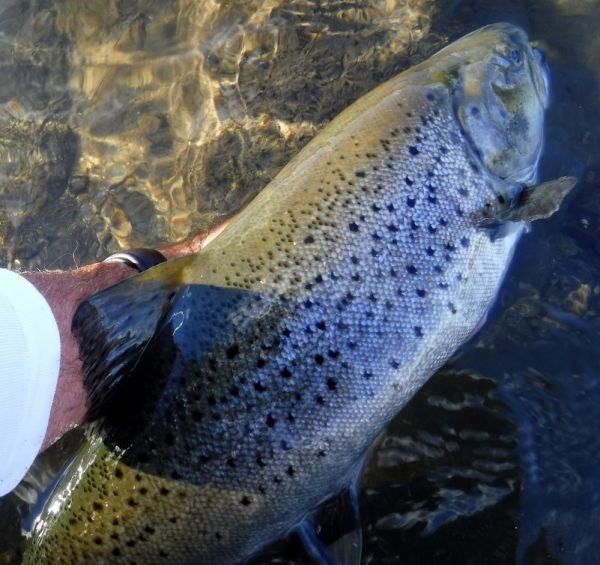
The next couple of months is usually the best time of year for browns ... and anglers fishing the Tongariro have landed some awesome fish recently.
Despite their size brown trout don't handle the stresses of capture as well as rainbows and it can often take several minutes for them to recover.
When releasing them, wade out to the slack water near the edge of the current.
Then holding them by the wrist of the tail with one hand and supporting them on the underside with the other move them gently backwards and forwards to get the water flowing through the gills. Eventually you'll feel them get stronger. But before you let go check they don't upend and can swim unaided.

A few years ago in June 2012 we did a report aimed at visiting anglers which included seven great nymphs to try on the Tongariro.
Flies go in and out of fashion like my wife's shoes so I thought it was about time to do another. Of course all the flies suggested back then will still work but below are a few more.
Most of these can be found in any of the local tackle shops.
 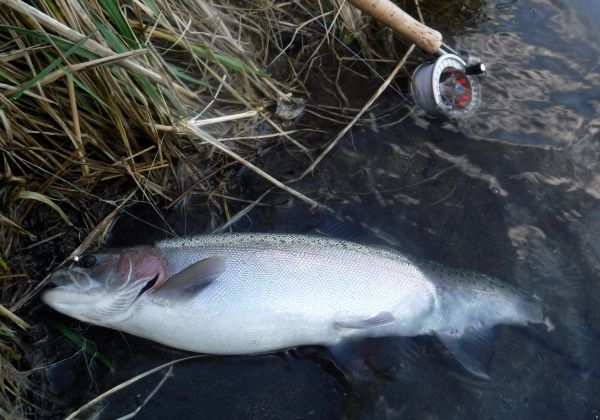
CZECH NYMPH
Not so much the fly but more the method itself.
Love it or hate it Czech Nymphing on the Tongariro is here to stay. Its popularity has increased over the last few years. And when done properly, in the right water it can be extremely effective. Its perfect for fast deep or shallow runs, pocket water or places it would be difficult to fish with other methods. But its not just a case of tying on a few heavy flies and lobbing it out. There's a lot more to it and it takes commitment and a lot of practise before you begin to consistently reap the rewards.
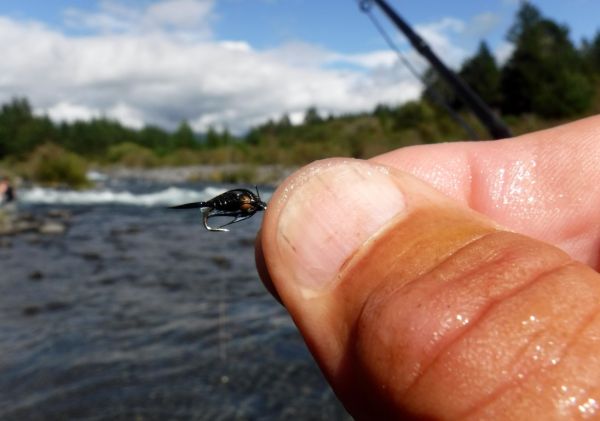 
BLACK ALL PURPOSE NYMPH
There's an old saying that any fly is a good fly ... as long as its black. I don't know if I go along with that all the way but I think its a good idea to carry a few black nymphs in our fly box.
Most anglers reach for their "black flies" on overcast days or when the river colors up. Dark flies contrast better in these conditions making it easier for the fish to pick them out.
But they'll work at anytime.
I was in Big Bend last week on a bright sunny day and had tried a couple of different flies with no "takers". On went a black AP nymph and I had three in half an hour. Coincidence ... maybe ... but they're always in my box.
This particular pattern is available from Silver-eye Flies. Silvereye Flies
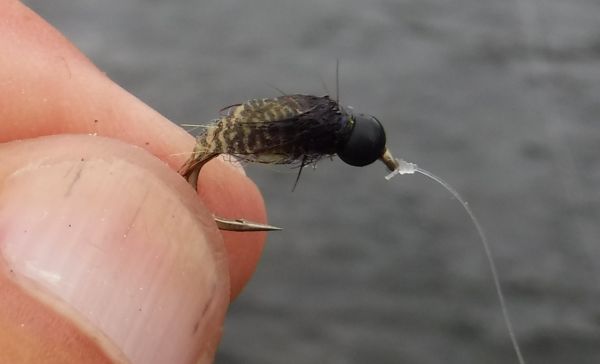 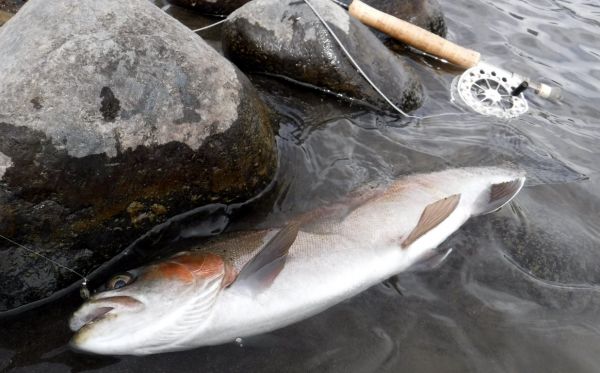
CADDIS PUPA/CADDIS PUPA EMERGER
The one you're sick of hearing about but this fly has caught me a lot of fish on the Tongariro. Its taken me around ten years of messing about with different beads, materials and hooks but I think this will finally do for me.
It doesn't matter if its summer or winter, brown trout or rainbows, this fly fished under the big dry will catch fish ... but again, you have to fish it through the right kind of water.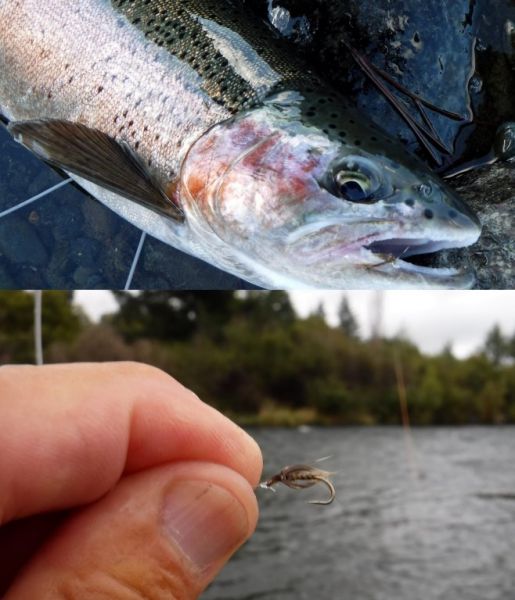
SPIDERS/SOFT HACKLES
Spider patterns have been around for hundreds of years and are one of the more simple flies to tie. Beginners often start fly tying with a Black and Peacock Spider.
But don't be fooled by their simplistic look. Soft hackle flies are versatile generic imitations that can be fished in a variety of ways.
Traditionally they're fished on a longish leader, often in teams of three. The cast is made slightly downstream and across and the flies allowed to sink. Takes usually occur as everything begins to tighten up, causing the flies to rise up like an emerging insect.
I often fish a spider pattern below the pupa under the big dry. As the indicator fly drifts downstream it bobs along in the current imparting movement into the soft hackle of the spider which fish sometimes find hard to resist.
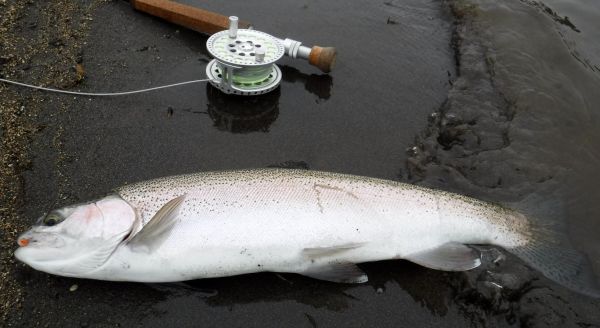 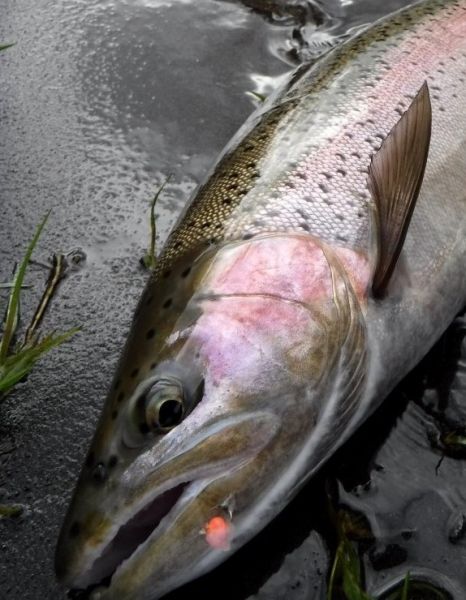
Jelly Eggs
It won't be long before all of us will be topping up our fly boxes with globugs. During the winter runs they are a "must have fly" on the Tongariro and surrounding rivers.
Loads of different patterns and color combinations out there, most of them made of globug yarn. But for the last couple of years I've done better with jelly eggs.
Jelly Egg is the nickname often used when referring to the Otter Soft Milking Egg. Otter Soft Milking Egg
Undoubtedly the most realistic egg pattern available, its highly effective once spawning fish enter the river. And although they're not as durable as traditional globugs as far as I'm concerned the trade off is worth it.
So there we are ... a few more to cram into your already bulging box ... I'd better rephrase that!

Right on cue the first of the iconic fly agaric mushrooms have popped up along the tracks ... a sure sign we are well into autumn. Some real autumnal weather today as well. And since late afternoon the rain has been getting steadily worse.
The power company's scheduled tunnel inspection began this week so with the river left to its own devices its currently flowing at forty plus cumecs.
Looks like a huge dump of rain is expected across many parts of the country over the next couple of days. So if you intend fishing the Tongariro keep a close eye on the flow charts. With that tunnel maintenance taking place and very heavy rainfall predicted it could be "the perfect storm" and from now on levels could rise dramatically ... that's if we get the amounts of rain forecast.
Be safe out there
Tight lines
Mike |
|
|
| Back to Top |
|
|
|
|
|
|
|